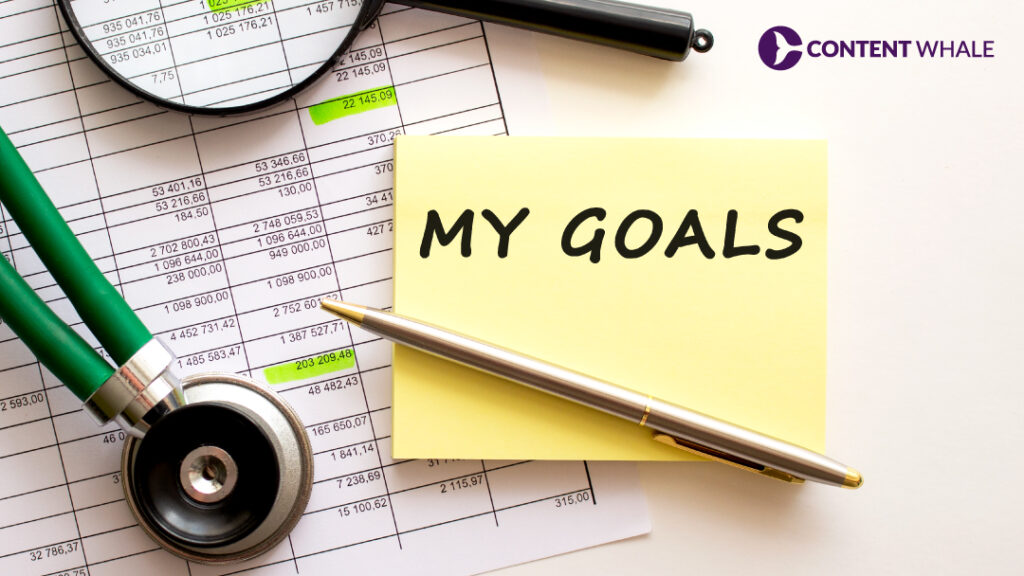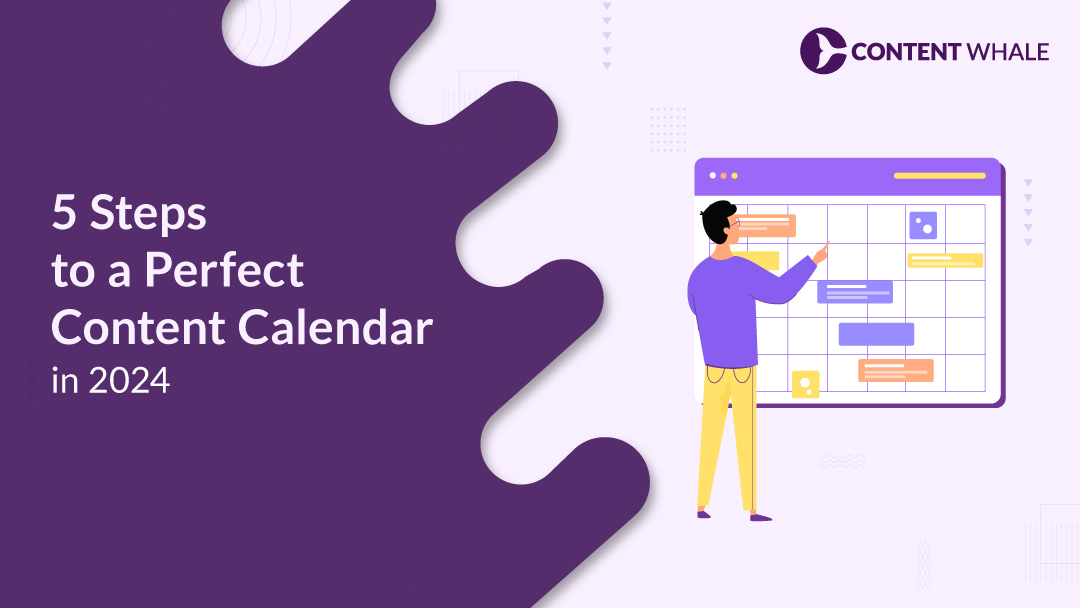Quick Summary
Learn the importance of a content calendar for effective content planning. This guide covers five practical steps to create a winning editorial calendar, helping you improve your content strategy and overall content organisation. By following these steps, you can streamline your content workflow and maintain a consistent publishing schedule. Whether you’re managing a blog, social media, or a marketing campaign, these tips will ensure your content creation plan is well-structured and efficient, leveraging the best content calendar tools available.
A content calendar is a strategic tool that helps organize and schedule all your upcoming content. It plays a pivotal role in content planning by ensuring that your content is published consistently and aligns with your overall content strategy. This essential tool is not just for blogs; it includes social media, email campaigns, and any other platforms where you share content.
The importance of a content calendar cannot be overstated. It helps maintain a consistent publishing schedule, which is key to engaging your audience regularly. Additionally, it improves content organisation by keeping track of all content pieces, their status, and deadlines, thus avoiding last-minute rushes and missed opportunities.
Using a content calendar also streamlines content management by providing a clear overview of your entire content workflow. It enables teams to collaborate effectively, ensuring everyone is on the same page and that each piece of content moves smoothly from ideation to publication.
This article aims to provide a step-by-step guide on creating an effective content calendar. By following these steps, you can enhance your content creation plan and utilize the best content calendar tools to stay organized and efficient. Whether you’re managing a small blog or a complex marketing campaign, a well-structured content calendar is indispensable.
Step 1: Define Your Content Goals

Defining your content goals is the first and most important step in creating a successful content calendar. Clear and measurable goals guide your content planning and help align your content strategy with overall business objectives.
Importance of Setting Clear and Measurable Content Goals
Establishing clear content goals is vital for several reasons. It provides direction, helps prioritize tasks, and measures success. Your goals should be specific, measurable, achievable, relevant, and time-bound (SMART). This approach ensures that your efforts are focused and aligned with your business objectives.
Aligning Content Goals with Business Objectives
Aligning your content goals with your business objectives ensures that your content supports broader company aims. For instance, if your business goal is to increase brand awareness, your content goals might include increasing social media followers or boosting website traffic through engaging blog posts.
Examples of Common Content Goals
Here are some examples of common content goals and how they align with business objectives:
- Brand Awareness: Increase website traffic by 20% in six months through SEO-optimized blog posts.
- Lead Generation: Generate 100 new leads per month by offering gated content like eBooks or whitepapers.
- Engagement: Improve social media engagement rates by 15% in three months through interactive content like polls and quizzes.
Tips for Defining and Prioritizing Content Goals
- Understand Your Audience: Know your target audience’s needs, preferences, and pain points. Use this information to set goals that resonate with them.
- Use Data and Analytics: Analyze past performance data to identify what worked and what didn’t. Tools like Google Analytics can provide insights into content performance.
- Set Realistic Goals: Ensure your goals are achievable with the resources you have. It’s better to set modest, attainable goals and exceed them than to set unrealistic ones and fall short.
- Prioritize Goals: Focus on goals that will have the most significant impact on your business. If brand awareness is your primary objective, prioritize activities like content creation and social media marketing that drive traffic and visibility.
Real-life Examples
| Brand | Overview | Content Strategy | Tools and Methods | Success Metrics |
|---|---|---|---|---|
| Red Bull Media House | Red Bull Media House produces high-quality videos, films, and documentaries centered around extreme sports and adventurous lifestyles, establishing Red Bull as a lifestyle brand. |
|
|
|
| Sephora – Beauty Insider Community | Sephora’s Beauty Insider Community is an online forum where beauty enthusiasts share tips, advice, and product recommendations, fostering engagement and loyalty. |
|
|
|
| Airbnb – City Guides | Airbnb’s City Guides provide travelers with unique and authentic experiences by offering local insights into various destinations. |
|
|
|
These examples illustrate how different brands use content calendars to plan, organize, and execute their content strategies effectively, aligning their goals with their audience’s interests and needs.
Step 2: Identify Your Audience and Content Types
Understanding your audience is essential for creating a successful content calendar. Knowing who you’re targeting helps tailor your content planning to meet their needs and preferences. Here’s how to effectively identify your audience and select the right content types.
Understanding Your Target Audience
The first step is to gather detailed information about your target audience. This involves analyzing demographics, interests, pain points, and behaviors. Create detailed audience personas to represent different segments of your audience. These personas should include age, gender, location, job role, interests, challenges, and content consumption habits.
By understanding your audience, you can create content that resonates with them, making your content strategy more effective. For instance, if your audience consists mainly of young professionals interested in technology, your content should focus on tech trends, career tips, and industry news.
Selecting the Right Content Types
Choosing the right content types is crucial for engaging your audience. Different content types serve different purposes and appeal to various segments of your audience. Here are some common content types and their benefits:
- Blog Posts: Great for sharing in-depth information and improving SEO. Ideal for topics that require detailed explanations.
- Videos: Highly engaging and perfect for tutorials, demonstrations, and storytelling. Platforms like YouTube and Instagram are excellent for video content.
- Infographics: Visually appealing and easy to digest. Useful for presenting data and statistics.
- Social Media Posts: Ideal for quick updates, engaging with your audience, and sharing multimedia content. Platforms like Facebook, Instagram, and Twitter are essential.
- Podcasts: Excellent for discussing topics in-depth and reaching an audience that prefers audio content.
- Email Newsletters: Perfect for maintaining regular contact with your audience and sharing updates, promotions, and exclusive content.
Creating Audience Personas
Developing audience personas helps in guiding your content creation plan. Each persona should represent a key segment of your audience and include detailed information about their needs and preferences. This ensures that your content is tailored to meet the specific requirements of each segment, making it more relevant and engaging.
Examples of Content Types That Resonate with Different Audiences
For example, a B2B company targeting marketing professionals might create blog posts on advanced marketing strategies, videos featuring industry experts, and infographics on market trends. Meanwhile, a lifestyle brand targeting millennials might focus on Instagram posts showcasing products in real-life scenarios, engaging stories, and interactive polls.
By identifying your audience and selecting the appropriate content types, you can create a more effective editorial calendar that aligns with your content strategy. This approach ensures better content organisation, a consistent publishing schedule, and a streamlined content workflow using the best content calendar tools.
Step 3: Plan Your Content Themes and Topics

Creating consistent themes and topics is crucial for maintaining a coherent and engaging content calendar. Themes provide a framework that guides your content planning, ensuring each piece of content aligns with your overall content strategy and brand message. This consistency helps build a recognizable brand voice and fosters audience trust.
Brainstorming Content Ideas
Start by conducting a thorough analysis of your target audience’s interests and needs. Use tools like social listening to gather insights on trending topics and relevant discussions. This helps in generating ideas that resonate with your audience.
Consider conducting keyword research to identify popular search terms and topics within your niche. This not only informs your content creation but also enhances your SEO efforts. Tools like Google Keyword Planner and SEMrush can provide valuable data on keyword trends and search volumes.
Using Keyword Research to Inform Content Topics
Keyword research is an integral part of planning your content themes and topics. Identify keywords that align with your business goals and audience interests. Group these keywords into clusters to form topic themes that you can explore in-depth. For example, if you run a fitness blog, you might create themes around “home workouts,” “nutrition tips,” and “mental health.”
Examples of Effective Content Themes and Topic Clusters
1. Fitness and Health:
- Themes: Home workouts, nutrition tips, mental health.
- Topics: “10 Best Home Workout Routines,” “Healthy Meal Prep Ideas,” “Managing Stress During Workouts.”
2. Digital Marketing:
- Themes: SEO strategies, social media marketing, content marketing.
- Topics: “How to Optimize Your Website for SEO,” “Top Social Media Trends for 2024,” “Creating a Content Marketing Plan.”
3. Technology and Gadgets:
- Themes: Latest tech trends, gadget reviews, tech tips and tricks.
- Topics: “Top 5 Tech Gadgets to Watch in 2024,” “Review: The Latest Smartphone Innovations,” “How to Boost Your Home Network Speed.”
Practical Tips for Theme and Topic Planning
- Seasonal Content: Incorporate seasonal themes into your calendar. For instance, create content around holidays, industry events, or seasonal changes that are relevant to your audience.
- Content Mix: Ensure a good mix of content types, such as blog posts, videos, infographics, and social media updates. This keeps your audience engaged and caters to different content consumption preferences.
- Editorial Calendar Tools: Utilize tools like Trello, Notion, or Google Sheets to organize your themes and topics. These tools help track deadlines, assign tasks, and maintain a consistent publishing schedule.
By planning your content themes and topics effectively, you can ensure your content calendar is well-organized and aligned with your business objectives. This structured approach enhances your content organisation and improves your overall content workflow.
Step 4: Create a Content Schedule
Creating a well-structured content schedule is essential for maintaining a consistent and organized content calendar. A well-planned schedule ensures that your content is published regularly, keeps your audience engaged, and supports your overall content strategy.
Building a Publishing Schedule
Start by determining the frequency of your content publication. This could be daily, weekly, or monthly, depending on your resources and audience expectations. A consistent publishing schedule helps build anticipation and regular engagement from your audience.
Tools and Templates for Creating a Content Calendar
Several tools can help you build and manage your content calendar effectively. Here are some popular ones:
| # | Tool | Key Features | Best For | Pricing |
|---|---|---|---|---|
| 1 | Google Analytics | Tracks website traffic, user behavior, and conversion rates. Integrates with other Google tools. Provides detailed reports and real-time data. | Website performance analysis | Free |
| 2 | Hootsuite | Social media scheduling, user/keyword/hashtag monitoring, content curation, team management, and comprehensive analytics for social media platforms. | Social media management | Starts at $99/month |
| 3 | Sprout Social | Combines social media management with robust analytics, custom reporting dashboards, social listening, and engagement tracking. | Social media performance tracking and engagement | Starts at $249/month |
| 4 | Brand24 | Monitors online mentions and sentiment analysis across various platforms, including social media, blogs, forums, and news sites. Provides competitive analysis. | Brand reputation management | Starts at $99/month |
| 5 | Semrush | All-in-one marketing toolkit that includes SEO, content marketing, competitor analysis, PPC, and social media analytics. | Comprehensive digital marketing analytics | Starts at $119.95/month |
Balancing Different Types of Content and Platforms
It’s important to diversify the types of content you publish and the platforms you use. This ensures that you reach a wider audience and keep your content strategy dynamic. Here are some tips:
- Mix Content Types: Include blog posts, social media updates, videos, infographics, and podcasts in your content calendar. This variety keeps your audience engaged and caters to different preferences.
- Platform-Specific Content: Tailor your content for each platform. For example, visual content like infographics and videos might perform better on Instagram and YouTube, while in-depth articles and blog posts are more suited for LinkedIn and your company blog.
- Seasonal Content: Plan content around seasons, holidays, and events relevant to your industry. This not only keeps your content timely but also increases engagement during peak times.
Examples of Well-Structured Content Schedules
A well-structured content schedule might include:
- Daily Social Media Posts: Schedule posts on platforms like Twitter and Instagram to maintain daily engagement.
- Weekly Blog Posts: Publish a new blog post every week on a specific day to create consistency.
- Monthly Newsletters: Send out a monthly newsletter with updates, highlights, and exclusive content to your email subscribers.
By following these steps and utilizing the right tools, you can create a comprehensive and effective content schedule. This ensures your content planning is organized, supports your content management goals, and aligns with your overall content creation plan.
Step 5: Monitor, Review, and Adjust

Tracking the performance of your content is essential to ensure that your content calendar remains effective and aligned with your goals. Regular monitoring, reviewing, and adjusting your content strategy can help you stay on track and make necessary improvements.
Importance of Tracking Content Performance
Regularly monitoring your content’s performance allows you to understand what works and what doesn’t. By using content calendar tools like Google Analytics, Hootsuite, or Semrush, you can gather data on key metrics such as engagement, reach, and conversions. This information is crucial for making informed decisions about your future content.
Tools for Monitoring and Analyzing Content Metrics
There are several tools available to help you track and analyze your content performance:
- Google Analytics: Ideal for tracking website traffic and understanding audience behavior.
- Hootsuite: Useful for monitoring social media performance across various platforms.
- Semrush: Provides detailed insights into SEO and content marketing effectiveness.
These tools can help you identify trends and measure the success of your content strategy.
Tips for Reviewing and Adjusting Your Content Calendar
- Set Regular Review Periods: Schedule regular intervals, such as monthly or quarterly, to review your content performance. This helps you stay proactive and responsive to any changes.
- Gather Feedback: Collect feedback from your audience through comments, surveys, and social media interactions. This direct input can provide valuable insights into what your audience prefers.
- Adjust Based on Data: Use the data and feedback to adjust your publishing schedule, content types, and themes. For example, if a certain type of post consistently performs well, consider incorporating more of that content into your calendar.
Examples of Adjustments for Improved Content Effectiveness
- Increase Frequency of High-Performing Content: If blog posts on specific topics receive high engagement, increase the frequency of these posts.
- Optimize Posting Times: Analyze when your audience is most active and schedule your posts during these peak times to maximize reach and engagement.
- Diversify Content Formats: If your audience engages more with videos than text posts, incorporate more video content into your content creation plan.
By regularly monitoring, reviewing, and adjusting your content calendar, you can ensure that your content planning remains relevant and effective, supporting your overall content organisation and content strategy.
Conclusion

A well-planned content calendar is essential for maintaining a structured and effective content strategy. It helps streamline your content planning and ensures that your content is consistently aligned with your business objectives. By organizing your content in advance, you can maintain a steady publishing schedule, keeping your audience engaged and your brand top-of-mind.
Utilizing content calendar tools like Google Sheets, Trello, or Asana can enhance your content management by providing a clear overview of your content workflow. These tools facilitate collaboration within your team, ensuring that everyone is on the same page and deadlines are met efficiently.
Regularly monitoring and reviewing your content performance is crucial. Use data from analytics tools to adjust your content creation plan based on what works best. This iterative process helps you stay relevant and responsive to your audience’s needs, optimizing your editorial calendar for maximum impact.
By following the five steps outlined in this guide, you can create a robust content calendar that not only supports your marketing schedule but also enhances your overall content organisation. Implement these strategies to ensure that your content marketing efforts are well-coordinated, strategic, and ultimately successful.
FAQs
1. Why is a content calendar important for my marketing strategy?
A content calendar is crucial as it helps streamline your content planning and ensures a consistent publishing schedule. It aligns your content strategy with business objectives, enhances content management, and improves overall content organisation. By visualizing your content schedule, you can plan ahead, avoid last-minute rushes, and maintain a steady flow of engaging content.
2. What tools can I use to create a content calendar?
Several tools can help you create an effective content calendar:
- Google Sheets: A versatile and accessible option for simple calendar creation and collaboration.
- Trello: Offers a visual board-based system ideal for managing content workflows.
- Asana: A robust project management tool that provides calendar views and integrates with various content workflow stages.
- Sprout Social: A dedicated social media management tool that includes scheduling, collaboration features, and analytics.
3. How often should I update my content calendar?
Regular updates are essential to keep your content calendar relevant. Ideally, review and update your calendar monthly or quarterly. This allows you to incorporate feedback, track performance, and make necessary adjustments to your content creation plan. Regular updates ensure that your content remains aligned with your marketing schedule and strategic goals.
4. What are the best practices for content planning?
Effective content planning involves several best practices:
- Set Clear Goals: Define what you aim to achieve with your content.
- Know Your Audience: Understand your audience’s preferences and tailor content accordingly.
- Diversify Content Types: Include a mix of blogs, videos, infographics, and social media posts.
- Use Analytics: Leverage data to inform your content decisions and measure success.
- Regularly Review and Adjust: Continuously monitor performance and refine your strategy.
5. How do I measure the success of my content calendar?
Measure success by tracking key performance indicators (KPIs) such as engagement rates, website traffic, conversion rates, and social media metrics. Tools like Google Analytics, Hootsuite, and Sprout Social can provide detailed insights into how well your content is performing. Regular analysis helps you understand what works and allows you to adjust your content strategy accordingly.





